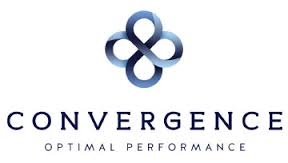
Exiting the hurly burly of day-to-day business provides the luxury of time for reading, watching and listening to people on topics of interest. In my case these are often about: the world of commerce, investing, human behavior, travel, humor etc. While this is an absorbing occupation, I sense that with the tsunami of information (and impending dotage), it is difficult to retain much of what is perused for long, much less put it to any use. Unless…
Embarking on this experiment helps? Every now and then, I hope to weave together a few of these reads into a short tapestry of my takeaways and synthesis, with links to some of the original material. These summaries may perhaps raise more questions than provide answers. Which seems quite satisfying for not only did Richard Feynman say, “ I’d rather have questions that can’t be answered than answers that can’t be questioned”, it also helps to tread carefully in a polarized world where views are so strongly held with little more than emotional corroboration. So, here goes:
Everydays – digital art by Beeple:
Digital art and NFTs have gone mainstream with Beeple’s collage of 5000 irreverent drawings and landscapes, “Everydays: The First 5000 days”, selling to a cryptocurrency investor with pseudonym Metakovan who is based in Singapore. The price – a stunning US$69 million, the highest ever for a digital property. Even more astonishingly, this price exceeds what anyone has ever bid for artwork by Dali or Gauguin and makes Beeple the third most expensive living artist. Everydays’ 5000 surreal images were created ‘everyday’ over 13 years, by Beeple or Mike Winkelmann. One image, for instance, shows Lincoln spanking baby Trump! This auction by Christie’s not only brings such art mainstream, it gives a sense of the digital auction audience – 22 million IDs logged in during the last hour of bidding for “Everydays”! Read here
What’s more, this sale also smashed records for NFT or tokenized assets i.e. digital proof of ownership and provenance, using Ethereum’s blockchain and cryptocurrency ether. Will this also mark an ascendancy for Ether vs. Bitcoin?
With such a large audience, it will not surprise anyone if auction house opt for digital bidding in parallel in years ahead. But it’s not all milk and honey. Derek Laufman (@laufman) the designer of Marvel superhero comics tweeted that someone is selling his artwork using NFT, with no rights to it – in other words having stolen it. So, everything on blockchain is not the irrefutable truth.
Incredibly Beeple was not all smiles about NFTs after bagging a princely sum. He is supposed to have said that someone created multiple IDs and bought 20 pieces of his art earlier and then fractionalized them. Metakovan is a creator of crypto based fund. He is expected to fractionalize his new purchase too. So not far in the future you can also own a piece of Beeple’s record breaking art via NFT based Art Funds?
As with Christie’s recent auction, it does make sense for artists in the physical world to tokenize their art, which, unlike investing in crypto, does not appear to have a downside, as it will open larger audiences and also establish provenance, making it less likely for someone else to steal and tokenize assets, as in Laufman’s case. Here’s how artists can try NFT
Big Tech, Free Speech and Schrodinger’s truth:
Since we’re on tech, Big Tech’s role in free speech is coming under increasing scrutiny. “Deplatorming” became a verb, much like NFT after Trump was banned by Twitter and Facebook. It’s being argued that Big Tech is so enormous it’s a public good and their boards or policies cannot determine who has a voice and who does not. But what about multiple warnings and fake news which preceded the ban? After all responsible platforms (especially those which have monthly active users larger than populations of India or China) have to try and eliminate inflammatory fake news and malaware? All this is so redolent of debates on Net Neutrality and recent recent standoff between Big Tech and Australian Government.
But what exactly is fake news? Some news is clearly established to be fake, while in several other instances it’s a questions of perspective or POV of special interest groups. I heard someone say on Clubhouse (CH) that those who are nurtured to believe that the written word is sacrosanct and hence are much more fallible. Polarization, fake news and the inflammatory nature of social media is perhaps going to redefine free speech and the Internet?
The written word, however evanescent (e.g. Snapchat, Insta Stories) leaves bread crumbs. CH on the other hand has no recording, no messaging and voice only. Despite the lack of markers, people are being more civil in debates on CH than on Twitter. Is that because text and digital social media make people behave more impersonally or is it due to lack of anonymity on CH? Perhaps it’s not the policy, but the product, which is designed to drag people deeper into their echo chambers. It’s the algorithm, silly! Even more interesting is that CH is such a legacy way of connecting (whoever makes a voice call or uses phone banking instead of internet banking). Maybe the interface with Internet (or at least social media) will after all be voice and not the keyboard, like it is for music and streaming services? Definitely Big Tech is no longer looking as infallible as it was just a few months ago, despite the natural oligopolies intrinsic to platform businesses.
If I were the Lord of Tartary:
Talking of polarization and the British Royals. If you are a pet lover and do not wish to suffer the indignities of keeping one, find neighbors who have playful furry companions. That allows you to enjoy without onerous responsibilities. The British Royal family too provides periodic vicarious opportunity for the rest of the world to vent their celebrity news thirst, without the tax burden. Meghan Markle and Harry have given the world yet another topic to be polarized about. Are you with the Royals or the turncoats? Apparently if you are 50 years or older you are more like to find this ratting-out of the family distasteful and those younger than 30 are firmly behind Markle and Harry. Which side am I one? Well, I already said I’m writing to fight the ravages of age.


